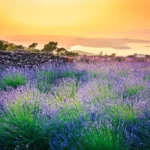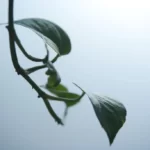Navigating water bodies, whether for recreation or transportation, can be a serene and enjoyable experience. However, it’s essential to be aware of potential hazards that can lurk beneath the surface. One such hazard is the “deadhead”. In the world of water navigation, a deadhead is not a passenger without a ticket but rather a submerged or floating object that can pose a significant risk to boats and vessels. Understanding what a deadhead is and the dangers it presents is crucial for safe and enjoyable journeys on the water.
Deadhead in Water Navigation
In the realm of water navigation, the term “deadhead” takes on a specific meaning. It refers to objects that are partially or entirely submerged in the water, posing hidden dangers to boats and watercraft. Deadheads can come in various forms, including logs, branches, debris, or even discarded items. These objects can be natural, like fallen trees that have ended up in the water, or man-made, such as discarded furniture or construction materials. Regardless of their origin, deadheads are often difficult to detect, especially in murky or fast-flowing waters, making them a navigational challenge for boaters.
The Dangers of Deadheads
Deadheads may seem innocuous, but they harbor potential dangers that can turn a peaceful boating trip into a hazardous situation. Collisions with deadheads can result in various undesirable outcomes. For one, they can cause significant damage to boats and watercraft. The impact can lead to structural damage, hull breaches, or damage to propulsion systems, which may require costly repairs. Moreover, passengers on board may be at risk of injury during such collisions, making safety a primary concern.
Additionally, encounters with deadheads can disrupt the flow of a water journey. Boaters may need to take evasive action to avoid these submerged hazards, potentially causing delays or navigational challenges. This can be particularly problematic in narrow or congested waterways.
In some cases, collisions with deadheads have even led to accidents, including capsizing or sinking of vessels. Thus, it is crucial for anyone navigating waterways to be aware of the presence of deadheads and take precautions to avoid them. In the following sections, we will delve into methods for detecting and avoiding deadheads, as well as the environmental impact they can have on aquatic ecosystems.
Detecting and Avoiding Deadheads
Detecting and avoiding deadheads is a crucial skill for safe water navigation. While deadheads can be challenging to spot, there are several methods and technologies that boaters can employ to minimize the risks they pose. Sonar systems, for instance, can help detect submerged objects by sending sound waves that bounce back when they encounter an obstacle. Visual observation is another essential tool; boaters should remain vigilant and watch for any signs of debris or obstacles in the water. When navigating unfamiliar waters, it’s advisable to consult local navigational charts or seek guidance from experienced boaters who are familiar with the area.
Once a deadhead is detected, avoiding it becomes the priority. Boaters should take evasive action by altering their course or speed to steer clear of the hazard. This may require quick decision-making and maneuvering, underscoring the importance of vigilance and navigation skills.
Environmental Impact of Deadheads
Beyond their impact on navigation, deadheads can also have consequences for aquatic ecosystems. Submerged logs and debris, for example, can alter the flow of rivers and streams, affecting the habitat and food sources of aquatic species. Deadheads can create eddies and turbulence that disrupt the natural course of water bodies, potentially leading to erosion of riverbanks and changes in sediment distribution.
Efforts are made to remove or mitigate the presence of deadheads in waterways to protect both navigation and the environment. However, this task can be challenging, especially in remote or heavily wooded areas.
Other Meanings of “Deadhead“
While we have focused on the water-related definition of “deadhead” in this article, it’s worth noting that the term can have alternative meanings in different contexts. For instance, in the transportation industry, a “deadhead” can refer to a segment of a journey where a vehicle is empty or not carrying passengers or cargo. In the world of music, “deadheads” are devoted fans of the Grateful Dead band. These alternate meanings are distinct from the water navigation definition but are interesting in their own right.
Conclusion
In conclusion, understanding the concept of a deadhead in water navigation is essential for boaters and watercraft operators. Deadheads, which are submerged or floating objects that pose navigational hazards, can lead to accidents, damage, or delays if not detected and avoided. Boaters should employ methods like sonar systems, visual observation, and navigational charts to detect and avoid deadheads. Additionally, recognizing the environmental impact of deadheads underscores the importance of their removal or mitigation.
While “deadhead” may have other meanings in various contexts, our focus in this article has been on its significance in water navigation—a term that reminds us of the hidden challenges that can arise when navigating the waters and the importance of safe and responsible boating practices.



